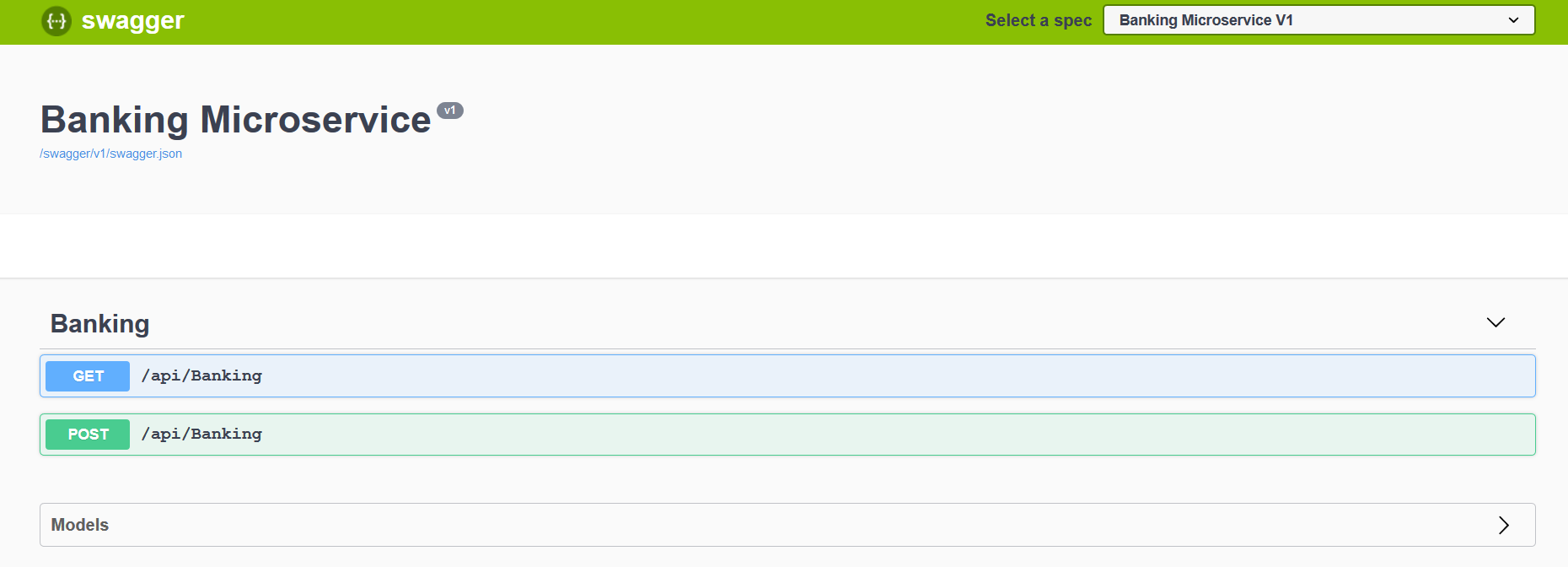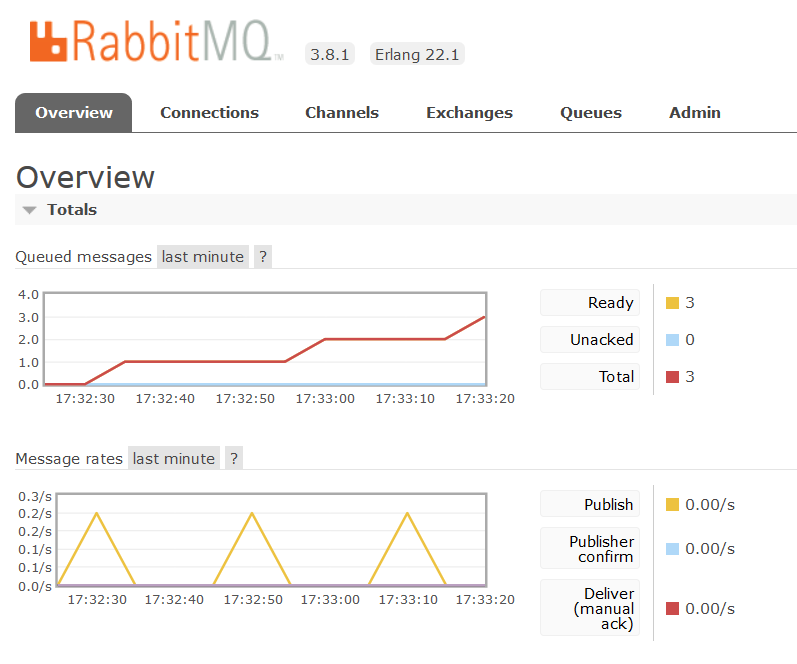.NET Core Microservice architecture design pattern with RabbitMQ messaging
- MicroRabbit.Domain.Core
- MicroRabbit.Infra.Bus
- MicroRabbit.Infra.IoC
- MicroRabbit.Banking.Api
- MicroRabbit.Banking.Application
- MicroRabbit.Banking.Data
- MicroRabbit.Banking.Domain
- MicroRabbit.Transfer.Api
- MicroRabbit.Transfer.Application
- MicroRabbit.Transfer.Data
- MicroRabbit.Transfer.Domain
- MicroRabbit.MVC
- Microservice architecture design pattern
- RabbitMQ messaging
-
MicroRabbit.Banking.Api project is listening on localhost port
5001(https) and5000(http)
-
MicroRabbit.Transfer.Api project is listening on localhost port
5003(https) and5002(http)
-
MicroRabbit.MVC project is listeing on localhost port
5005(https) and5004(http)
Check if .NET Core Framework 2.2+ and SQL Server 2016+ is installed on your machine. Next configure the database connection string in appsettings.json file before creating a needed database for MicroRabbit.Banking.Api and MicroRabbit.Transfer.Api project.
To create a database for MicroRabbit.Banking.Api project, select MicroRabbit.Banking.Data in Visual Studio as >Start Project< and execute the following commands in Package Manager Console:
Add-Migration "Initial Migration" -Context BankingDbContextUpdate-database
To create a database for MicroRabbit.Transfer.Api project, select MicroRabbit.Transfer.Data in Visual Studio as >Start Project< and execute the following commands in Package Manager Console:
Add-Migration "Initial Migration" -Context TransferDbContextUpdate-database
After successfully created the BankingDb and the TransferDb databases you can add some test data to Accounts and TransferLogs tables. Alternatively run the MicroRabbit.Banking.Api, MicroRabbit.Transfer.Api and MicroRabbit.MVC and use swagger or MVC form input to create test data.
If all Api and MVC projects running correctly you can check the queued messages between sender and consumer applications by the microservices architecture design pattern with RabbitMQ.
First download and install erlang before download and install RabbitMQ on the same machine the microservcies are running. After erlang and RabbitMQ installations are done, now open RabbitMQ command prompt with administrator rights and type in the following command:
rabbitmq-plugins enable rabbitmq_management
Now access the RabbitMQ admin dashboard in a browser on localhost port 1567. The default username and password for login is guest.
Other RabbitMQ commands:
- Stop app
rabbitmqctl stop_app - Start app
rabbitmqctl start_app - Reset app
rabbitmqctl reset - Add new user
rabbitmqctl add_user username password - Set new role
rabbitmqctl set_user_tags username administrator - Set new permission
rabbitmqctl set_permission -p / username ".*" ".*" ".*"
When submitting a pull request:
- Clone the repo.
- Create a branch off of
masterand give it a meaningful name (e.g.my-awesome-new-feature). - Open a pull request on GitHub and describe the feature or fix.
Davain Pablo Edwards
- Microsoft.NETCore.App
- MediatR
- Microsoft.Extensions.DependencyInjection
- Newtonsoft.Json
- RabbitMQ.Client
- Microsoft.AspNetCore.Razor.Design
- Swashbuckle.AspNetCore
- Microsoft.EntityFrameworkCore
- Microsoft.EntityFrameworkCore.Design
- Microsoft.EntityFrameworkCore.SqlServer
- Microsoft.EntityFrameworkCore.Tools
MIT License
Copyright (c) 2019 Davain Pablo Edwards
Permission is hereby granted, free of charge, to any person obtaining a copy of this software and associated documentation files (the "Software"), to deal in the Software without restriction, including without limitation the rights to use, copy, modify, merge, publish, distribute, sublicense, and/or sell copies of the Software, and to permit persons to whom the Software is furnished to do so, subject to the following conditions:
The above copyright notice and this permission notice shall be included in all copies or substantial portions of the Software.
THE SOFTWARE IS PROVIDED "AS IS", WITHOUT WARRANTY OF ANY KIND, EXPRESS OR IMPLIED, INCLUDING BUT NOT LIMITED TO THE WARRANTIES OF MERCHANTABILITY, FITNESS FOR A PARTICULAR PURPOSE AND NONINFRINGEMENT. IN NO EVENT SHALL THE AUTHORS OR COPYRIGHT HOLDERS BE LIABLE FOR ANY CLAIM, DAMAGES OR OTHER LIABILITY, WHETHER IN AN ACTION OF CONTRACT, TORT OR OTHERWISE, ARISING FROM, OUT OF OR IN CONNECTION WITH THE SOFTWARE OR THE USE OR OTHER DEALINGS IN THE SOFTWARE.





.png)
